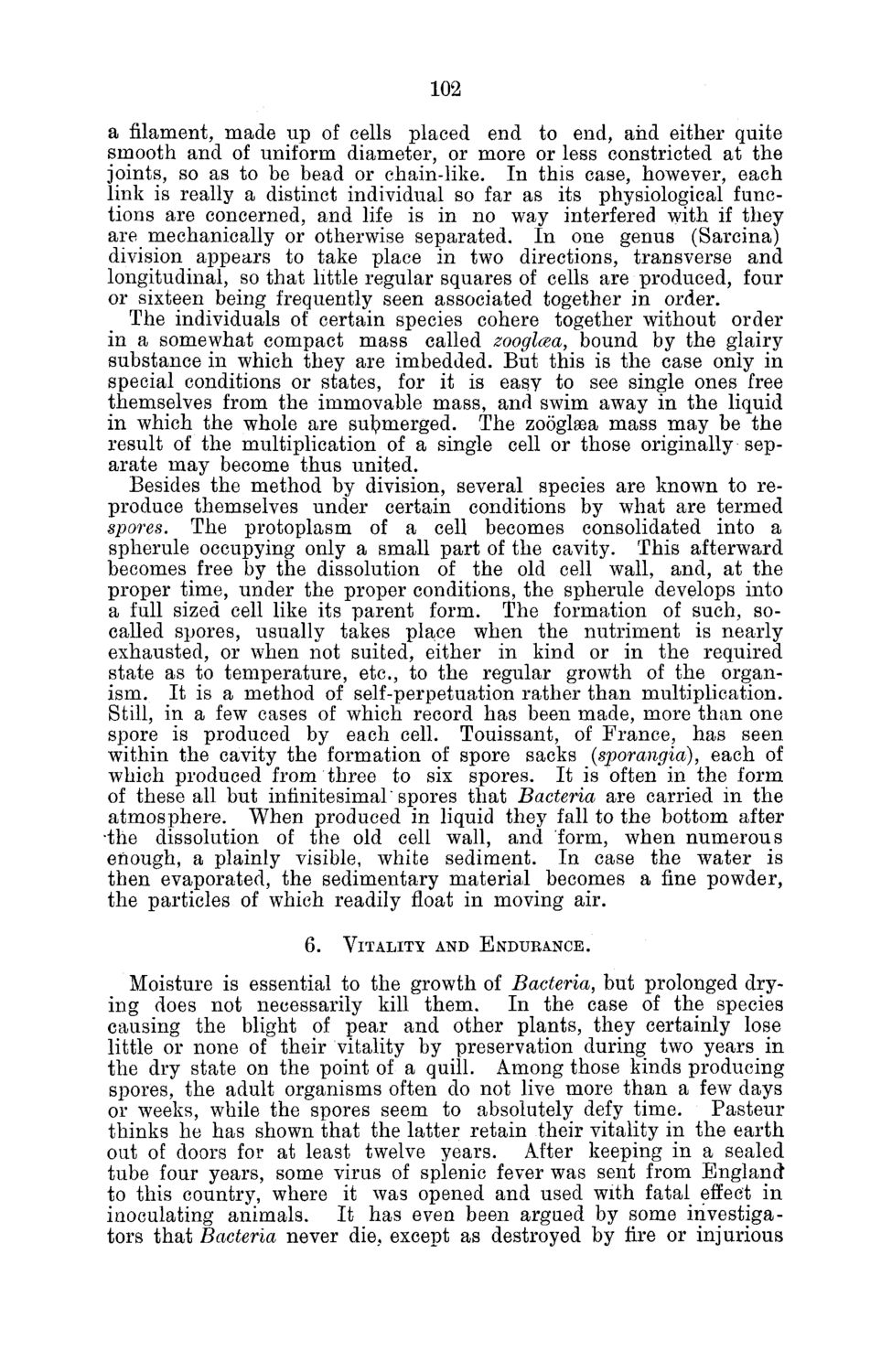| |
| |
Caption: Board of Trustees Minutes - 1882
This is a reduced-resolution page image for fast online browsing.

EXTRACTED TEXT FROM PAGE:
102 a filament, made up of cells placed end to end, and either quite smooth and of uniform diameter, or more or less constricted at the joints, so as to be bead or chain-like. In this case, however, each link is really a distinct individual so far as its physiological functions are concerned, and life is in no way interfered with if they are mechanically or otherwise separated. In one genus (Sarcina) division appears to take place in two directions, transverse and longitudinal, so that little regular squares of cells are produced, four or sixteen being frequently seen associated together in order. The individuals of certain species cohere together without order in a somewhat compact mass called zooglcea, bound by the glairy substance in which they are imbedded. But this is the case only in special conditions or states, for it is easy to see single ones free themselves from the immovable mass, and swim away in the liquid in which the whole are submerged. The zooglsea mass may be the result of the multiplication of a single cell or those originally separate may become thus united. Besides the method by division, several species are known to reproduce themselves under certain conditions by what are termed spores. The protoplasm of a cell becomes consolidated into a spherule occupying only a small part of the cavity. This afterward becomes free by the dissolution of the old cell wall, and, at the proper time, under the proper conditions, the spherule develops into a full sized cell like its parent form. The formation of such, socalled spores, usually takes place when the nutriment is nearly exhausted, or when not suited, either in kind or in the required state as to temperature, etc., to the regular growth of the organism. It is a method of self-perpetuation rather than multiplication. Still, in a few cases of which record has been made, more than one spore is produced by each cell. Touissant, of France, has seen within the cavity the formation of spore sacks {sporangia), each of which produced from three to six spores. It is often in the form of these all but infinitesimal" spores that Bacteria are carried in the atmosphere. When produced in liquid they fall to the bottom after the dissolution of the old cell wall, and form, when numerous enough, a plainly visible, white sediment. In case the water is then evaporated, the sedimentary material becomes a fine powder, the particles of which readily float in moving air. 6. VITALITY AND ENDUKANCE. Moisture is essential to the growth of Bacteria, but prolonged drying does not necessarily kill them. In the case of the species causing the blight of pear and other plants, they certainly lose little or none of their vitality by preservation during two years in the dry state on the point of a quill. Among those kinds producing spores, the adult organisms often do not live more than a few days or weeks, while the spores seem to absolutely defy time. Pasteur thinks he has shown that the latter retain their vitality in the earth out of doors for at least twelve years. After keeping in a sealed tube four years, some virus of splenic fever was sent from England to this country, where it was opened and used with fatal effect in inoculating animals. It has even been argued by some investigators that Bacteria never die, except as destroyed by fire or injurious
| |